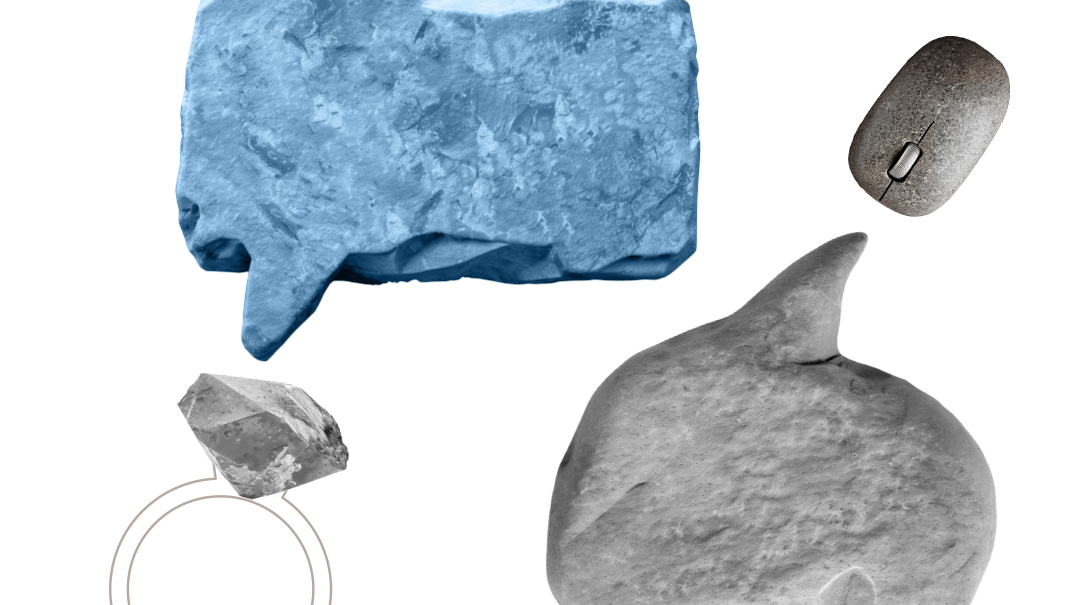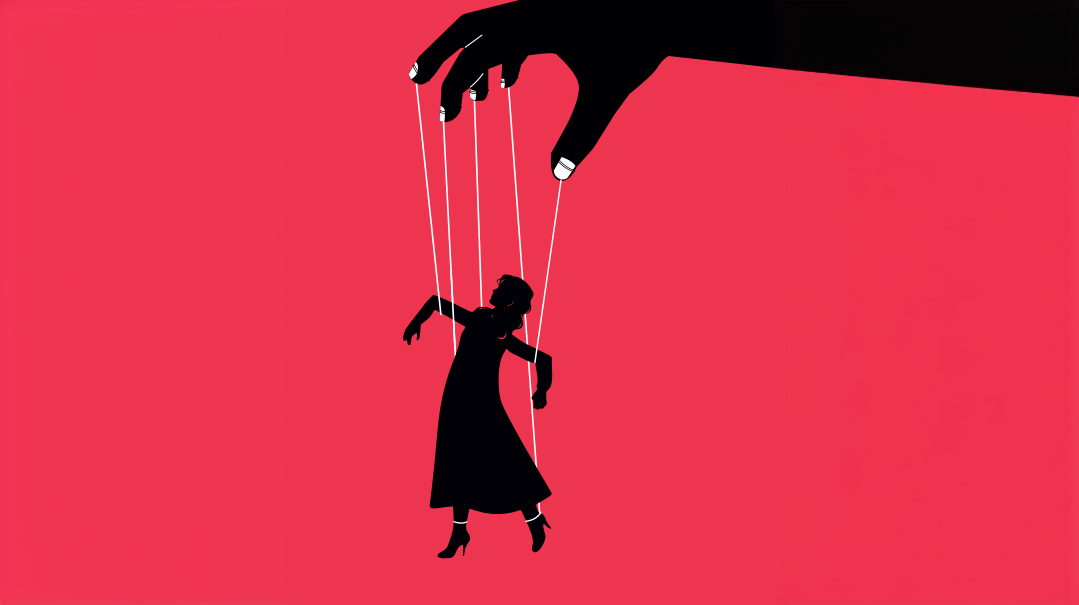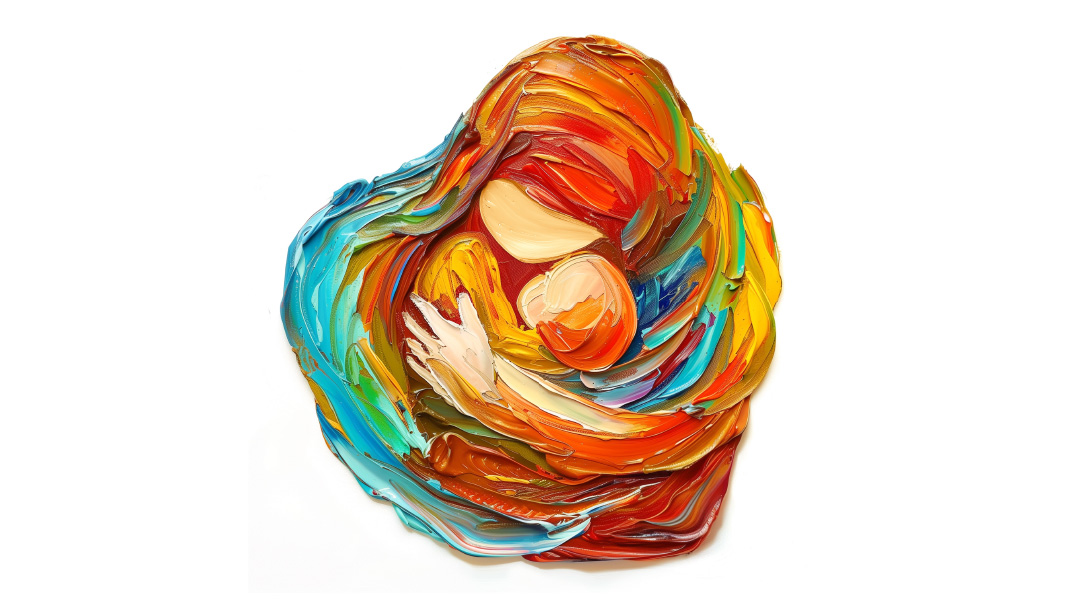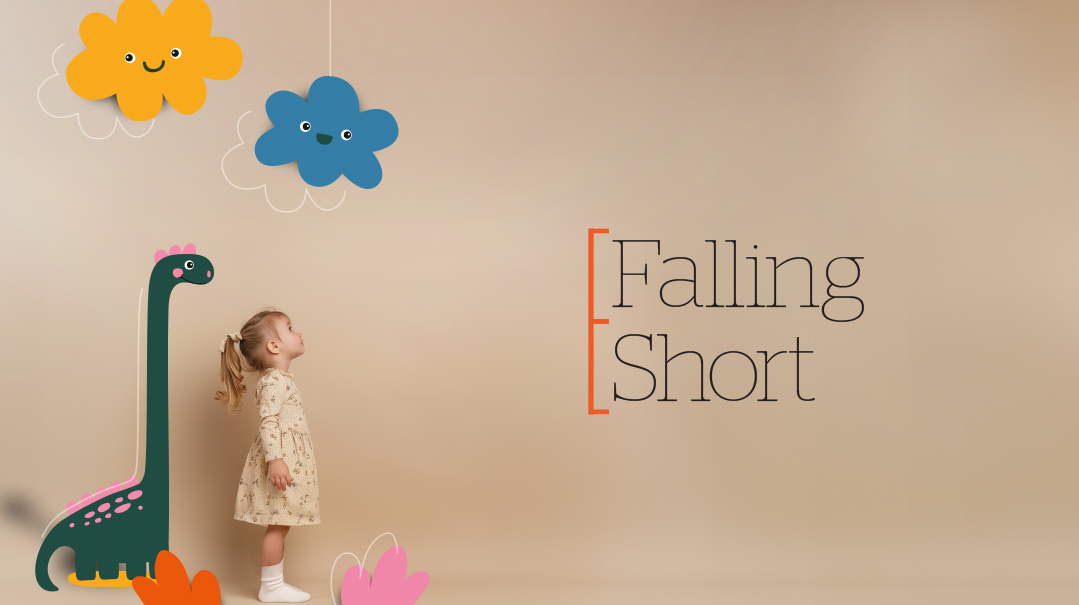Live the Dream
| October 12, 2021All I had to do was figure out my deepest desire, work to activate it — and it would happen?

"Dear Future Me, I hope to ___, I want to ___, I dream of ____, I believe ___.” I’d seen the ads for Dina Friedman’s Power Series course, where women seem to get everything they ever desired: an engagement, a baby, a new home, a new job, and more. I was intrigued, so when Family First presented me with the opportunity to take the Power Series course and write about my experience, I jumped. My successes were not quite as pronounced. I gained only self awareness and life skills.
Would this course really work for me? I wasn’t sure. Honestly, I’m a tad lazy (don’t tell my kids). Still, I love to learn (tell my kids!), so, I decided not to tell Family First they’d be better off with someone more conscientious. And though I knew Dina is heavy on the homework — the processes she teaches don’t become internalized and habitual without work — I signed up anyway. I had high hopes that in addition to what it promised, Power Series would change my nature.
The Power Series is a live course, not pre-recorded like the Chanoch L’Naar one, which was important to me. There’s accountability in a live class, since, though I like to believe I have the grit to stick to something, I still have 20 pounds to lose. (The same 20 I referenced in my very first Family First article. Yeah.)
Plus, the live class would give me the opportunity to ask questions as they come up. Also — and here’s the part I’m not as proud of — I was being commissioned. Which meant I’d need to follow through and do the work, because how can I convince you if it didn’t work for me?
I’d do this. I’d do it right. And I’d report back with brutal honesty.
The Power Series Concepts Defined
Koach Haratzon: “Desire is good,” says Dina, dispelling any notions about denying yourself the things you want. On the contrary, desires are Hashem’s way of operating through you to expand you, your life experiences, and ultimately the world itself. Hashem created This World to give, as we know from Mesillas Yesharim. By acknowledging our desires and asking Hashem for what we want, we allow His shefa to flow.
But for this to work, you really need to desire your Desire. Question is, if we’ve been conditioned to suppress desire, how can we get there?
Welcome to the Power Series. Dina’s here to show you how to activate your desires, and she’ll stick with you until they manifest. The tools and processes she teaches are important steps on this journey.
Koach HaTefillah: Hashem has set up a world in which we need to ask for things in order to get them. But not all tefillos are created equal. Dina wants you to daven in a way that’ll get you what you really want.
Koach HaEmunah: Learning to let go of limiting beliefs and believing that all things are possible for you.
Trust: What is trust and how can we grow it? You need to truly trust that you’re worthy of achieving your Desire. Do you have doubts? Take advantage of Dina! She’ll walk you through the process, and she won’t give up until you’re trusting.
Letting Go of Attachment: I desire. I davened properly. I have Emunah and trust. So where is my Ideal Situation? Relax, says Dina. Hashem knows what He’s doing, and He’s building in this time lag so your Desire will manifest “in this way, or an even better way.” But this is Dina, so she’s not going to leave you without a tool to get you over your feeling of desperation.
Koach HaMachshavah: This comprises the essence of the Power Series. Learn to focus on the ideal rather than your lack of it to invite Positivity into your life. Positivity attracts Positivity and positive energy will bring forth your Desire.
Within Koach Hamachshavah, Dina teaches myriad practical process to keep your positive energy flowing and your emotions up. It’s about getting rid of subconscious beliefs, about finding the benefits to your current reality and removing overwhelm. There are at least 15 processes that will get you there, and Dina walks you through each one.
Take what speaks to you, Dina says, but don’t think you’ll get what you want without inner work.
Koach HaHishtadlus: The hishtadlus you’re called upon to do should be clear and logical. Once you’ve done your inner work, you should be able to recognize the next steps. But if you’re still not sure, fear not. There’s also a tool to figuring it out — and powering you through it.
Financial Abundance: This one gets its own heading because it’s so much more than a new home or car. Within the topic of financial abundance, Dina teaches practical tips for spending and saving, but also how to open yourself up to receive more of it.
When There’s a Will…
In Week 1, Dina introduced the concept of Koach Haratzon. As a class activity, we charted various life areas, such as “My Ideal Home,” “My Ideal Marriage,” “My Ideal Financial Situation,” “My Ideal Job,” and more.
We noted what was good about each one, what we desired in each of area, and what was neutral. My chart had things like: Health. I’m generally healthy, I want to lose weight, my weight hasn’t gotten in the way of enjoying life. You get the idea.
Homework: Think of an area in your life you want to work on. Dina had us choose a desire that we’re scared to acknowledge, deem unacceptable, or have supressed because it seems impossible. Nothing is impossible, she said.
Next, we wrote out our vision in present tense, positive form, with expression. (For example: My dinner plates are two-thirds vegetable, one-third protein/starch. All my kids eat supper beautifully all the time.)
Yeah, homework is hard for me. Also, I don’t do “present tense, positive form, with expression.” I’m grounded in the here and now, and I’m never sarcastic.
Our Life’s Desire
In Week 2, we chose our Life Desire. I decided to go with financial abundance, as it’s a pretty safe topic to share in public. As the primary breadwinner in the family, I’d really, really like to make more money in fewer hours. And besides, who doesn’t want to be rich?
Dina jumped right in with practical tools and tips. We learned to clarify what we really want, to increase our level of Desire, and to think in essence rather than form. Say you really want to renovate your kitchen. “My kitchen is beautiful” goes a lot farther as a desire rather than “My kitchen has white cabinets and marble counters.”
“Don’t limit yourself to the color of your cabinets,” said Dina.
For the most part, the Power Series focuses on Life Desires. But in Week 3, Dina gave us a tool for manifesting Daily Desires. “When there’s something you need to do in your day that you’re not excited about,” she said, “ask yourself three questions: What do you want to do? Why do you want to do it? How do you want to feel? Go deeper, and deeper, and deeper, until you get to the essence.”
I used the Three Questions Technique right away, with amazing results. I had to take my kids clothes shopping, and you know, teens. (Also, preteens.) But I followed three steps:
1) I want to go shopping, not because the kids have no clothes (up for discussion), but because…
2) I want to provide for them, I want them to be happy, and I want them to feel good about who they are, and I know clothing is a part of that.
3) At the end of the shopping trip, I want to feel happy, successful, proud, loving, and loved.
I could feel my desire shoot up. I won’t pretend I was dancing for joy at the prospect of spending an hour or more watching my girls nix outfit after outfit, but I was no longer dreading it. Also, I was curious how it would play out now that I’d used the technique.
And — cynics, forgive me — we accomplished things on this trip. My kids came home with clothing they were excited to wear. They were happy, I was happy. They felt loved, I felt loving.
We talked about essence over form in tefillah as well, and I began to implement this right away in my own davening, asking Hashem for the endgame, not the middle.
The Power of Faith
When we got to Koach HaEmunah, my inner skeptic came back. Dina encouraged us to challenge our limiting beliefs which get in the way of our being open to receive. Think you can’t have a beautiful garden because you live in the city? Hashem has His ways. Don’t limit Him.
For the record, I believe in Hashem and His power to do anything. But I do wonder how this fits into reality. Hashem doesn’t make open nissim in our generation. And sometimes, He says, “No.”
But Dina insisted that this question would resolve itself as we move forward, so I reminded myself that I promised to have an open mind.
At this point, I also dropped focusing on the Life Desire. It’s not that I didn’t want financial abundance, but as Dina went through different tools, I saw other ways I could utilize them in my day-to-day life. I ended up focusing on the techniques that spoke to me and using them in ways that were relevant to my life.
The Role of Trust
Next came Trust. It’s 2021, so we went back to our childhoods to discover how our upbringing contributed to how we relate to the fulfillment of our desires. Did you receive everything on a silver platter? Then you’ll relate to Hashem as a loving, giving Father. Did you have to beg and nag and pull your own strings to get what you needed as a child? That experience will shape how you relate to Hashem and His giving.
We encountered some real work here. If your expectations were negative, you needed to work on that before you could see how your Desire manifests.
I dismissed the childhood piece — not because I didn’t believe it to be true, but because I didn’t feel it pertained to me. Still, I’m a millennial, so by definition I’m insecure about my own parenting (I took Chanoch L’Naar, remember?), and this idea gave me pause. I started noticing how I parent. I wanted my kids’ experience to be positive, even when the answer I give is “no.”
Letting Go of Attachment wasn’t really applicable to me, since I was no longer working on a Life Desire. I mean, I kept Financial Abundance in the back of my mind, but the exercises I liked (the immediate, practical ones) didn’t seem to lend themselves here. Still, I listened in awe as Dina guided a volunteer through the process. (This is an amazing feature of the course, by the way. If you do take it, listen live, and don’t be shy. It’s free coaching. Dina is kind and patient, and she doesn’t rush you. When a participant said she still wasn’t feeling it, Dina started over and did the whole thing again until the woman was comfortable. Dina’s also great at painting beautiful pictures out of fumbling desires.)
Think Good, It Will Be Good
Koach Hamachshavah is where the real work is. I’d been waiting for this. But I’ll be honest: When we got there, I wasn’t happy. The first part, being positive, “tracht gut, vet zein gut,” was great: there’s no denying that positivity is a powerful and attractive force, nor that turning yourself into a positive person can only be a good thing.
But in one class, Dina posited that her friend brought negative energy to a medical crisis by worrying how the procedure would turn out because of an ingrained belief that hospitals are bad — and then it turned out poorly. I cringed. It turned out I’m not the only one who found this concerning. At the next question/answer session, almost all the questions focused on how the Power Series fits in with everything we’ve ever learned about how Hashem runs the world. Dina was adamant there was no contradiction, patiently explaining it again and again. Here’s how I reconciled the idea in the end: If we do the work, really opening ourselves to receiving, really trusting Hashem will give it to us, we become different people, people to whom Hashem says, “Yes.”
There’s lots of inner work to be done under Koach Hamachshavah. But Dina didn’t leave us floundering. She proffered processes and tools and homework and all sorts of ways to flip our subconscious beliefs so we could become positive vessels of receipt. I was just recovering from childbirth at this point in the course, so I took what I could and left what I couldn’t (I’m not so into meditation). But I tried to incorporate these tools in any way that I could throughout my day and in my interactions with my family and myself.
Koach Hamchshavah incorporates Emotions. We delved into this when we came back from the Pesach break. I was listening to recorded sessions, playing catch up. I was feeling extremely overwhelmed with work and life, and I didn’t really have time anymore. But when I listened, I was glad I did. Dina went through a list of emotions, tagging them as high vibration (positive) or low vibration (negative), and cautioned us that with all the work we’ve been doing to make ourselves keilim to receive, if we operate on low vibration (negative emotions), we can’t see the good.
I realized that with everything going on (including working full-time while quarantining with my kids after being out of the country for Yom Tov), my default state was negative. I didn’t do the exercises Dina taught, they were too complicated for my life right at that point, but just the realizations Dina awakened within me opened me up. I forced myself to smile even when I didn’t feel it. I paused for a moment and focused on something good, and I felt expanded. It wasn’t a long-term solution, it worked for me only in the moment, but in the moment, it worked.
By now, I was excited to learn Dina’s technique for combatting overwhelm. Dina was methodical, as usual, having us write down everything we needed to do. Not for the first time I wondered if I’m the only writer who never writes. I don’t make lists, I don’t journal.
So while a woman named Chaya volunteered live, and the rest of the group took out pen and paper, I just thought of everything I needed to do: work, work, make supper, do laundry, work, clean the bathrooms, grocery shopping, work, camp shopping, breakfast, work, lunch, work, homework, supper, laundry, work, the bathrooms, work, work, work. Oh, I forgot to say work.
And maybe the writing part is key, because while the overwhelm technique worked for Chaya, it didn’t work for me. Sure, it was great to “hand” the non-urgent stuff over to Hashem and tell myself it could get done tomorrow by someone else. But though I have the most wonderful husband and kids, and they do help me, tomorrow came and my list was longer.
Still, by now I’d grown; I realized I’d need to let go of my cynicism to allow the Power Series to work, and I could laugh about it. (Also, as I write this, two months later, things in my life have calmed down: work is not as crazy, the kids are in camp, and my cleaning lady just gave me another day. Can I offer this as a success for the Power Series? Why not?)
The Sweat of Our Brow
Then we were up to Hishtadlus. I was excited about this. Dina had explained that when you’ve done the inner work, the outer hishtadlus flows seamlessly as actions become obvious and logical — and that it may involve discomfort. I appreciated that she acknowledged this.
Dina expounded: Even as we see our desires manifest, it doesn’t mean smooth sailing (although, she says, when you do the inner work, you can bypass a lot of unnecessary trouble). For example, you finally have the baby you were davening for. There will be sleepless nights and crying toddlers. You got the job you wanted, but there will be stress involved.
For me, this acknowledgement was important and validated the entire course — even though I’d already seen results in applying the techniques. I knew the processes worked, I tried them, and they held true. But I needed to hear that Dina believes in hardship, that Olam Hazeh is not all hunky-dory, that though Hashem wants to give, our purpose in This World is still to overcome nisyonos tailored for our personal growth.
Financial Abundance. At the time, life and work were still overwhelming, so I listened to the recordings of the classes late. Very late. But Dina’s wisdom never goes out of style. She taught practical tips about how to grow your wealth. As a trained Mesila coach, I liked how practical they were.
We were learning techniques that opened our hearts and minds to wealth while not spending money we didn’t yet have, because we believed that with the Power Series we’d get there. That was important.
I took the techniques Dina taught and applied them in other ways. For example, Dina explained that money is a means of exchange. “To receive money, you must be willing to perform a service.” I took this to mean that I could exchange my money for services that would make my life easier, and for the first time ever, I bought take-out for supper.
I realized that buying that pizza was the right thing to do. Because when I finally got to the essence of my Desire, I discovered that I want to be here, relaxed, and that store-bought pizza got me out of the rat race and helped me be present in my life. I didn’t feel like a failure when I served take out. I felt empowered.
Still Powerful
So would I recommend Power Series? Wholeheartedly. (I’d also recommend that you choose one Desire and follow through with it. Do the homework, please.)
I say I did the Power Series “wrong.” And maybe I did. But maybe I didn’t.
I went into Power Series with high hopes that the built-in accountability with the course being live and the commitment to write this article would make me do it properly. That didn’t happen. But the Power Series was still powerful. The tools Dina taught are universal and mostly simple. And they brought almost immediate results. No, I didn’t channel my Life Desire. But I took the concepts Dina taught and applied them to my life.
Self-awareness and life skills. Dina, thank you.
Coaching Session
I took advantage of a coaching session with one of Dina’s trained coaches. I’m a millennial, remember? It came toward the end of the course, and I had a real concern.
Yes, I dropped the Life Desire. But whenever anyone asked me, I’d tell them I was working toward financial abundance. I wanted to cut back on my working hours, but still be able to support my family, and for that I needed money.
Right before my coaching session, I’d seen some (slight if we’re being honest) progress towards this, but I didn’t feel good about it. It didn’t come along with emotional abundance, which I was expecting would happen if Power Series really worked.
My coach sat with me and started from the beginning. We talked about my limiting beliefs (you need to work for your money), and did one of the first exercises Dina teaches to get real clarity on your Desire. (I’d done this in the beginning, but apparently not well enough.)
It turns out I’m not looking for financial abundance (though I am, I promise you I am). I don’t want money for money’s sake. I want financial abundance because it would enable me to cut back on my working hours so I can be there for my home and my kids.
I don’t want to always be thinking of the next thing that has to get done. I want to be that mother who doesn’t mind if things get a little messy, who takes her kids shopping for fun (!), who can relax into a bake night without thinking about bathrooms and laundry and supper that won’t get done because I have a full workday tomorrow and there just isn’t time. So the essence of my desire — what I really want — is more time with my family.
I came away from the coaching session enlightened, and much happier. My coach encouraged me to follow through with the program, going over the techniques that would bring me closer to my Desire, and I… didn’t do the homework. Still, crystalizing my priorities enabled me to take a step back and analyze situations through this lens: Will this help me stay in the present? If not, I’m learning to give things up.
Put It Into Practice
We were in the market for a new car right around Pesach time. Baruch Hashem, we’d outgrown our minivan, but I was very, very not excited about buying a 12-seater van. My driveway is shared, it slopes downward, we have a fire hydrant in front of our house, there’s hardly any street parking in the city, and we get lots of snow.
Also, I was in two car accidents, one in my actual driveway, where I was in reverse instead of drive, and I hit the garage and shattered the back window. Baruch Hashem no one was in the back, but I have real trauma from it, and I make my husband maneuver the driveway for me. If I do that on a minivan, imagine what a 12-seater would be like!
Our minivan literally didn’t drive, so how would we get to my parents for Pesach? Looking back, we had clear nissim all along the way. And my entire hishtadlus consisted of techniques Dina taught. (My husband took care of the actual details.)
To get to my parents, I davened for essence, not form. I asked Hashem to get us there safely and happily with minimal fuss. In the end, I got what I asked for, except for one thing: we made the trip in two cars. But actually, I didn’t daven that we all go together; that would have been unrealistic. Maybe that was my limiting belief?
Up until we bought our new van (I love it), we went back and forth on whether to get a van or a minivan. A minivan wouldn’t fit our family, and obviously made no sense, but neither did a van, for all the reasons I mentioned above. Once we made the decision to go ahead with the van, I did a “contrast to clarity,” which is one the first tools Dina teaches. You divide a paper in half, writing all the things about the situation that seem negative (contrast) on one side. Then, flip it to positive (clarity). Again, we look for essence, and we don’t put in limitations. “My Ideal Car” situation looked something like this:
The car will be hard to drive. The car will drive safely and smoothly.
I won’t be able to park in the driveway. I won’t have trouble parking.
We won’t find parking on the street. Parking spots will open up as we need them.
See how in each I left so much open to Hashem’s plan? I don’t need a specific parking spot, but I do need to be able to park. That’s something I learned from Dina.
It sounds ridiculous, but we bought the van, brought it home and… we love it. It’s a smooth ride, there’s much less fighting in the back seat, I have become an expert in backing up into the driveway, and friends, I’ve seen parking spots literally open for me.
(Originally featured in Family First, Issue 763)
Oops! We could not locate your form.







